THE dominant media have either mentioned only in passing or completely ignored US imperialism’s role in the Mamasapano incident of January 25, 2015. That absence is also notable in the reportage of the peace process between the Philippine government and the Moro Islamic Liberation Front (MILF).
Neither has any corporate media organization even considered the possibility that imperialist intervention and the influence of US agents in the government are the primary reasons behind the Aquino administration’s resistance to peace talks with the National Democratic Front of the Philippines (NDFP).
The Mamasapano clash between elements of the Philippine National Police Special Action Force (PNP-SAF) and other armed groups including fighters of the MILF – which cost the lives of 44 SAF men, 17 MILF fighters and six non-combatants – torpedoed what would have otherwise been smooth sailing for the passage of the Bangsamoro Basic Law (BBL). A combination of Congressional bigotry, politics and cluelessness has so far prevented its passage. But for having approved the Mamasapano police operation despite its implications on the peace process, the impasse is fundamentally President Benigno Aquino III’s responsibility.
Indispensable to the realization of the Comprehensive Agreement on the Bangsamoro (CAB) between the MILF and the Philippine government, the BBL and the end of hostilities were supposed to be among the legacies of the Aquino administration.
But in the aftermath of the Mamasapano clash, the dominant media, even before the details of the encounter were known, helped fan the flames of anti-Muslim bigotry by describing the clash as a “massacre,” a “slaughter,” and as indicative of MILF treachery. They thereby encouraged the country’s worst politicians, who, in their eagerness to seize any opportunity to enhance their chances in the 2016 elections, pandered to mass prejudice and blocked the passage of the BBL.
Ignoring the US role in the incident, or apparently thinking that it deserved only passing mention, the dominant media organizations once again demonstrated that they consider their interests – in ratings, advertising revenues, and in pandering to local and foreign elite interests – superior to those of the people.
In contrast to the constant breakdown of peace talks between the Philippine government and the NDFP, the speed with which the process that led to the signing of the CAB, which included US-brokered meetings outside the country between Aquino and the MILF leadership, was primarily due to US support and outright intervention, and the Aquino government’s eagerness to please its US patron.
US intelligence operatives were involved in the planning and implementation of “Oplan Exodus” (the operation that was supposed to arrest or kill suspected terrorist “Marwan” and his Filipino cohort). But the United States had been part of the process since 2003 when the late MILF chair Hashim Salamat wrote then US President George W. Bush for help in facilitating a peace agreement between the MILF and the then Arroyo administration.
Salamat appealed to “the basic principle of American fairness and sense of justice (sic)” to justify US intervention in internal Philippine affairs. Diplomatic cables leaked by Wikileaks reveal that the US embassy in the Philippines and the US Institute for Peace (USIP) itself entered into negotiations with the MILF, with the then US ambassador to the Philippines even travelling to Mindanao for meetings with the MILF leadership in its headquarters, where she was received like a head of state.
The Bush administration apparently saw in the Salamat appeal an opportunity to boost US economic and strategic aims in the Philippines, which include the assurance of US multinational access to the natural resources of the prospective MILF autonomous region, as well as the possibility of obtaining military basing rights as part of the then US focus on consolidating and expanding its interests in Asia/
Mindanao produces nearly half of Philippine food requirements. It has gold and nickel reserves. Some estimates say that Mindanao waters hold 67 million barrels of oil and 228 billion cubic feet of natural gas. During the current, post-Bush period of US President Barack Obama’s “pivot to Asia,” US troops in the Philippines have been based in Mindanao for over a decade, although supposedly only on a “temporary” basis under the terms of the Visiting Forces Agreement (VFA).
But even during the Arroyo administration, MILF spokespersons had already been leaking to the Philippine media the group’s openness to having US military bases in the prospective MILF territory. Although foreign affairs would be the responsibility of the national government, which has the exclusive power to allow or disallow foreign military bases, the MILF would presumably have a lot to say on the matter should it ever come up – and should the prospective Bangsamoro autonomous territory ever be realized.
These considerations help explain US enthusiasm and support for the peace agreement between the MILF and the Philippine government. Both US support and its own interests explain the speed with which the Aquino administration arrived at an agreement with the MILF. On the other hand, US antipathy to peace talks between the Philippine government and the NDFP – and the Philippine elite’s hostility to a substantial agreement covering political and economic reforms – are behind the Aquino administration’s refusal to honor such pre-Aquino agreements between the government and the NDFP as the Joint Agreement on Security and Immunity Guarantees (JASIG) and the Comprehensive Agreement on Respect for Human Rights and International Humanitarian Law (CARHRIHL) and to resume peace talks.
The fact that among the world’s Muslim insurgencies, only the MILF has proven to be the most accommodating and the most willing to compromise with imperialism also helps explain the speed with which the CAB was signed. But the Aquino administration also sees the achievement of peace in the areas of conflict in Mindanao as crucial to its unrelenting focus on ending the 46-year old communist-led guerilla war solely through military means. Peace with the MILF would release its troops for combat in those areas in Mindanao where the New People’s Army is active – and where, according to military intelligence, it is strongest.
None of these has ever been reported in depth in the dominant media. The responsibility for providing both the information and analysis that the Filipino people need to understand now falls – as it has in the past fallen – to the alternative press and media. The task of the alternative press of providing the information and analysis the people need is especially crucial in exposing imperialist intervention. It is an essential part of its duty to provide the people the reliable information and analysis they need so they may understand that while peace in Mindanao is everyone’s concern, it was being forged by the Aquino administration in furtherance of the economic and strategic interests of US imperialism, and in the long term likely to compromise both national sovereignty as well as the future of the Bangsamoro.


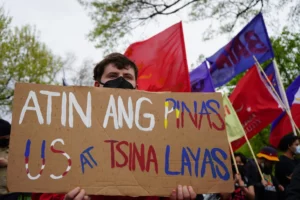
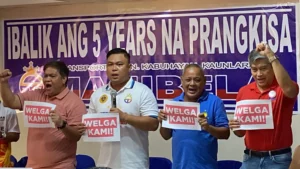
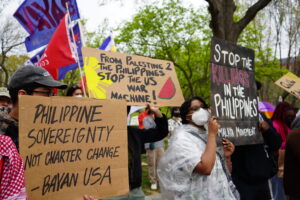

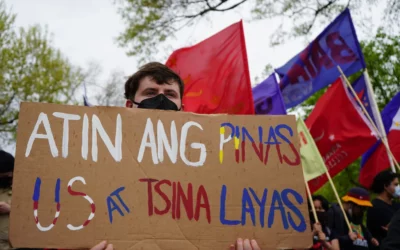
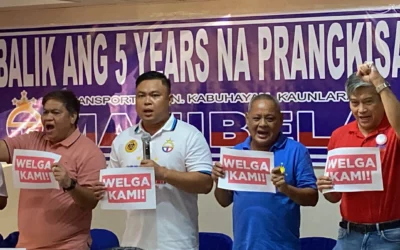
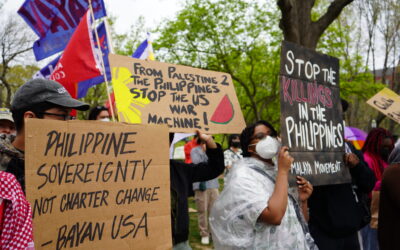
0 Comments